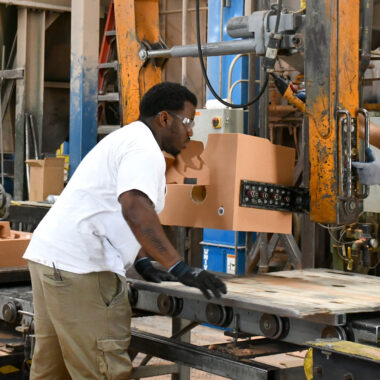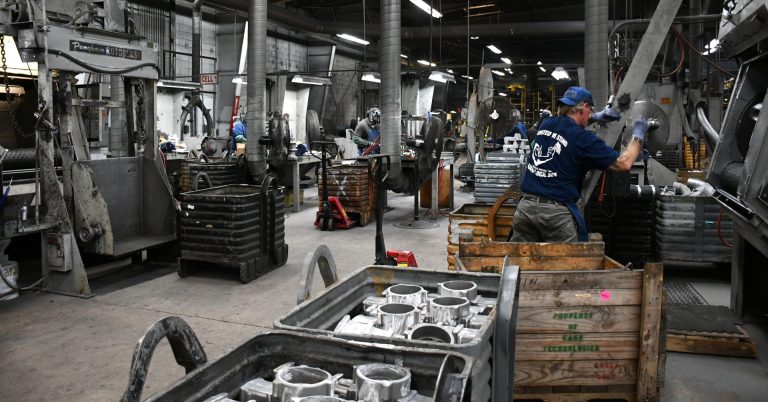Unveiling the Art of Light Weight Aluminum Spreading: A Comprehensive Overview for Beginners
In the realm of metalworking, light weight aluminum spreading stands as a craft that marries artistry with precision. As newbies begin on this journey, they are encountered with a labyrinth of strategies, devices, and safety and security methods that create the structure of grasping the art of aluminum spreading.
History of Light Weight Aluminum Casting

Among the essential milestones in the background of light weight aluminum spreading was the development of the initial light weight aluminum spreading device in 1886 by Charles Martin Hall. This advancement transformed the market by allowing for automation of light weight aluminum castings, leading the way for its prevalent use in different sectors such as auto, aerospace, and building and construction. For many years, innovations in technology have actually further fine-tuned the light weight aluminum casting process, making it more precise, affordable, and eco friendly. Today, aluminum spreading remains to play a critical role in the manufacturing industry, providing a functional service for generating complex get rid of high stamina and resilience.
Important Devices for Novices
When starting the trip of aluminum spreading as a novice, getting the vital devices is extremely important for making sure a smooth and successful spreading procedure. A crucible, normally made from graphite or clay-graphite, is basic for melting light weight aluminum. Crucible tongs are needed for taking care of the warm crucible securely. A heating system, either electric or gas-powered, is important for thawing the light weight aluminum to its fluid state. To get rid of contaminations and solidified particles, a skimming tool is important. A stirring pole helps in blending the liquified aluminum and making sure harmony. Flask and molding sand are important for producing molds into which the liquified light weight aluminum is poured. A mold and mildew framework, including cope and drag, is needed for molding the sand. Venting rods assist in creating networks for air and gas to run away from the mold and mildew during casting. Finally, safety and security equipment such as heat-resistant gloves, apron, and face guard are important for safeguarding oneself throughout the spreading procedure. With these essential tools in hand, novices can kickstart their light weight aluminum casting journey with self-confidence.
Standard Steps in Light Weight Aluminum Spreading
To initiate the light weight aluminum casting procedure effectively, beginners should first prepare the mold and ensure its appropriate placement within the mold structure. Once the mold prepares, the following action includes melting the light weight aluminum. This can be done making use of a heater or a straightforward gas lantern, depending on the range of the task. The molten aluminum is after that thoroughly put into the mold and mildew, loading it to the brim. It is important to permit the aluminum adequate time to solidify and cool inside the mold before trying to remove the casting.
After the light weight aluminum has cooled down and solidified, the mold and mildew requires to be opened to expose the newly developed casting. Newbies should wage caution throughout this step to prevent harming the spreading or the mold. The excess material, recognized as the sprue and any extra flaws, can be removed by trimming and sanding the casting. Finally, the spreading can be brightened and completed according to the preferred specifications. Mastering these basic steps is important for novices aiming to dig right into the art of light weight aluminum casting.
Common Sorts Of Light Weight Aluminum Alloys
Among the crucial factors to consider in light weight aluminum casting is comprehending the diverse range of aluminum alloys generally made use of at the same time. Light weight aluminum alloys are identified based upon their chemical make-up and residential properties, with each kind offering special attributes fit for various spreading applications. One usual light weight aluminum alloy is A356, understood for its exceptional castability and excellent mechanical buildings, making it popular in various sectors such as auto and aerospace. An additional commonly used alloy is 6061, valued for its high toughness and deterioration resistance, making it appropriate for marine applications and structural elements. Additionally, the 380 alloy is preferred for its superior fluidness and machinability, making it a top option for intricate castings requiring complex details. Comprehending the homes and advantages of these common light weight aluminum alloys is essential for newbie wheels to select one of the most appropriate alloy for their certain casting needs, guaranteeing top quality results in their casting tasks - aluminum casting illinois.
Security Safety Measures in Spreading Aluminum
Thinking about the essential role of aluminum alloys in the spreading process, anchor focusing on safety preventative measures is paramount to ensure a effective and safe and secure spreading setting. When dealing with molten aluminum, it is vital to put on ideal personal protective equipment (PPE) such as heat-resistant handwear covers, aprons, deal with shields, and safety goggles to prevent injuries and burns. In addition, make sure proper air flow in the casting area to reduce exposure to hazardous fumes and gases released throughout the melting process.
To stop possible fires, always have a fire extinguisher nearby and develop a clear emptying strategy in situation of emergency situations. It is necessary to carry out routine safety and security training sessions for all workers associated with the casting operation to inform them on ideal techniques and over at this website emergency situation procedures. Proper handling of equipment, consisting of crucibles, ladles, and molds, is vital to stop mishaps and preserve a safe workplace.
In addition, maintaining a clean and organized office can help in reducing the danger of slides, trips, and falls. By sticking to these safety preventative measures, beginners can develop a protected foundation for grasping the art of aluminum spreading.
Conclusion

It was not up until the 19th century that significant advancements in light weight aluminum casting were made, specifically with the advancement of a lot more reliable methods for melting and forming light weight aluminum you could try this out alloys.
One of the vital turning points in the history of aluminum casting was the development of the first aluminum casting maker in 1886 by Charles Martin Hall.When getting started on the journey of light weight aluminum spreading as a newbie, getting the necessary devices is vital for making sure a smooth and effective spreading process.One of the crucial factors to consider in light weight aluminum casting is understanding the diverse array of light weight aluminum alloys typically made use of in the process. By understanding the basic actions and crucial devices entailed in light weight aluminum spreading, beginners can efficiently function with various kinds of light weight aluminum alloys.